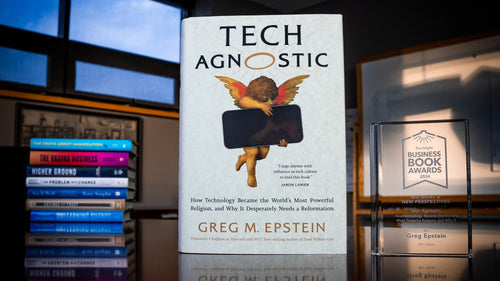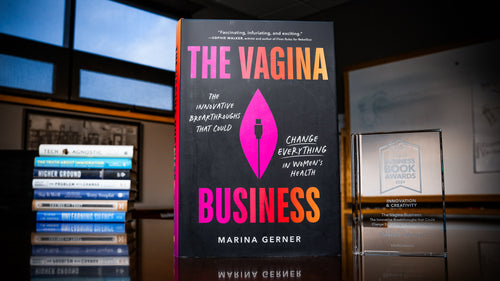Shortcut Your Startup: Speed Up Success with Unconventional Advice from the Trenches
 From former Goldman Sachs investment bankers turned entrepreneurs, and stars of the syndicated television show, Hatched, comes a practical playbook for aspiring business innovators, filled with nontraditional yet accessible advice for making the most of your business—Shortcut Your Startup: Speed Up Success with Unconventional Advice from the Trenches (Gallery/Jeter Publishing, January 16, 2018, $26.00 Hardcover).
From former Goldman Sachs investment bankers turned entrepreneurs, and stars of the syndicated television show, Hatched, comes a practical playbook for aspiring business innovators, filled with nontraditional yet accessible advice for making the most of your business—Shortcut Your Startup: Speed Up Success with Unconventional Advice from the Trenches (Gallery/Jeter Publishing, January 16, 2018, $26.00 Hardcover).
The Reum brothers have learned personally from every triumph and tribulation over the years. Whether it was through building their own spirits brand, VEEV, or founding their newly successful brand development and investment firm, M13, Courtney and Carter have streamlined an effective and easy-to-understand method for maximizing business ventures. From products, and services, to technology and media, these methods can be applied across the board.
Shortcut Your Startup is filled with personal anecdotes and real-life advice from the playing field. Broken down into ten key “Startup Switchups,” the Reums flip traditional advice on its head and guide readers through pre-launch investigation tips ranging from strategies for running and scaling your business, to if, how, and when to exit your business.
The following excerpt, from the Introduction to the book, discusses…
5 CRITICAL FACTORS OF RAPID BRAND BUILDING
Just as startup companies are both emerging and failing at unprecedented rates, brand building is no longer a decade-plus process. The amount of time that it takes to build a recognizable brand, a “household name,” has been dramatically reduced. One key indicator of this is the rate at which today’s companies are scaling. (See the chart below.)

As Mary Meeker pointed out in her 2016 Internet Trends Report, it took Nike fourteen years to reach $100 million in sales, Lululemon nine years, and Under Armour eight. At the time, those brands were some of the fastest-growing consumer brands around. They were—and remain—massive successes. However, in the last few years, we’ve seen tech-enabled consumer brands such as ClassPass, Dollar Shave Club, Casper, and the Honest Company reach the same heights in significantly less time. (And fall equally fast—Beepi, established in 2013, was out of business by 2017.)
We believe that five critical factors are fueling the rapid scaling of consumer brands in today’s market. They combine to act as a flywheel, accelerating business life cycles.
1. Personal computers in our pockets are creating new behaviors.
It’s easy to take for granted the extent to which these devices have worked their way into our waking and sleeping lives. What we used to call “smartphones” are now portable computers that we carry around with us and touch on average 2,600 times per day. Americans spend 71 percent of their total digital minutes on smartphones, and as the growth of desktops slowly plateaus, smartphone usage continues to rise. In fact, mobile Internet usage is growing at over 11 percent each year and recently hit a new high of 220 minutes per day. In contrast, in 2011, usage was under 50 minutes. In 2016, US smartphone users spent 90 percent of their time on mobile devices interacting with apps. More and more, people are able to do almost everything on their phones, from purchasing goods to ordering dry cleaning or massages.
The implications? First, people are more reachable than they have ever been, and they have the ability to make purchases conveniently without entering stores. Second, startups have easier and cheaper access to the market than ever before. As opposed to the past, when entrepreneurs faced expensive distribution networks, today vendors can easily get their products in front of consumers anywhere, anytime. Any vendor can sell through a platform such as Amazon, taking power away from the giant retailers that used to control the market. This dynamic shift has placed more power in the hands of technology platforms across industries such as gym membership (e.g., ClassPass) and ride-sharing services (Uber and Lyft).
2. Brands are speaking less to consumers and more through consumers.
As a result of the increased time spent on mobile platforms and social media, consumers in the United States, especially Millennials, have led the charge on a developing trend: sharing. Though “sharing economy” often refers to peer-to-peer platforms, there is no doubt that social media provide a medium for people to express their opinions on the goods and services they consume. Take entrepreneur Gary Vaynerchuk, for instance. We met him fairly early on when he was creating his Wine Library. It’s not every day we meet another adult beverage alum who has transcended the category, but he’s found tremendous success across various social and entertainment channels: his YouTube show, the #AskGaryVee show; and The Gary Vaynerchuk Audio Experience podcast. Across those channels, Gary has been able to interact with millions of customers and fans by responding to their Tweets and Instagram posts and covering topics ranging from gadgets, trends, and new products, to wine.
Whereas in the old days, if you tried a product and loved it, you might have recommended it to a few friends; today, if you post it to your Facebook or Instagram account, thousands of your friends and followers can see it in a matter of seconds. That is also why a product’s ratings on Amazon or a restaurant’s Yelp reviews are so impactful: consumers are making decisions based not only on what their friends post but on aggregated product reviews.
You’ve probably seen “growth hacks,” where brands offer everything from discounts to cash rewards when you share a product or service with people in your network. Companies have picked up on the fact that more than 80 percent of consumers in today’s market trust recommendations from individuals over brands. Consumers are looking more and more to friends and influencers on social media to learn about brands, products, and experiences. In fact, it is projected that in 2017, brands will increase their influencer marketing expenditures by more than 60 percent. Consumers are looking to share information and learn from one another, as opposed to directly from companies—and brands are beginning to react.
3. Tools are available to market in an increasingly targeted way.
In the old days, billboards, magazines, and previews dominated advertising strategies as companies took a “splatter” approach to advertising: they found high-traffic channels and spent their marketing budgets on those channels. Today, as companies collect massive amounts of data on their consumers, brands are increasingly able to market to very specific groups of people. Platforms such as Facebook, Pinterest, and Instagram are a marketer’s dream. They provide companies with access to specific types of customers and collect data on those individuals based on their activity. For example, Facebook retargeting allows an advertiser to target people who visited its website with different messages, depending on where they stopped in the buying process. Retargeting tends to have a much higher success rate than advertisements targeting customers for the first time. It’s an obvious point, because retargeting is reaching a more qualified lead. These tools either didn’t exist in the past or were prohibitively expensive and/or harder to track.
Similarly, look-alike targeting has proven to be very effective in our experience of scaling and growing brands at M13. Platforms such as Facebook allow digital marketers to define their target audiences based on previous user behavior and to compare existing customers to the Facebook universe in order to find similar users. Other companies are following suit, including Pinterest, which has its own act-alike audience targeting options. By using such tools to target customers strategically, you will develop increased deliverability, higher performance, and less list fatigue.
4. (Online) traffic is cheap.
What one considers to be cheap is of course relative, but the fact that mom-and-pop brands can now easily access specific customers and afford to advertise to them is a massive change in the marketing world. Whereas advertising used to be dominated by larger, well-capitalized brands, today smaller brands can afford to get their products in front of hundreds of thousands of qualified leads around the globe at a fraction of the historical cost and in much less time. The advantages in terms of capital efficiency and speed are tremendous, because getting your product or service in front of customers is no longer predicated on getting into retail or being able to afford prime advertising.
5. Abundant capital is available.
Today there’s more capital available for venture growth than at any other time in history. There’s actually over five times as much capital today earmarked for venture investment as there was in the late 1990s. Part of the increasing investment in venture capital is being led by “angels,” corporations and individuals who, through crowdfunding and other methods, make early investments in startup companies. Since angels have joined the venture capital game, they have poured more and more money into the VC industry each year. Starting in 2009, the US angel investment market grew from $17 billion to $24 billion. This abundance of capital has made it easier for brands to expand and grow while incurring significant operating losses, with the goal of scaling faster and acquiring market share. However, the abundant capital that makes the funding environment more favorable for entrepreneurs is also making the world much more competitive. It’s easier than ever to get out there but harder than ever to stick.
Excerpted rom Shortcut Your Startup: Speed Up Success with Unconventional Advice from the Trenches by Courtney Reum and Carter Reum.
Published by arrangement with Gallery Books/Jeter Publishing, an imprint of Simon & Schuster, Inc.
Copyright (c) 2018 by M13, LLC.
All rights reserved.
ABOUT THE AUTHORS
Courtney and Carter Reum are brothers, former investment bankers, entrepreneurs, operators, and investors. They started their careers at Goldman Sachs working on deals ranging from Under Armour to Vitamin Water and have since left to pursue careers as both Entrepreneurs and new age VCs. After co-founding and eventually successfully selling VEEV Spirits, Courtney and Carter started M13, a 21st century investing platform that seeks to affect outcomes for founders, partners, and investors by institutionalizing the process of scaling consumer-centric brands. Courtney and Carter currently live in Los Angeles, where they run day-to-day operations at M13.



